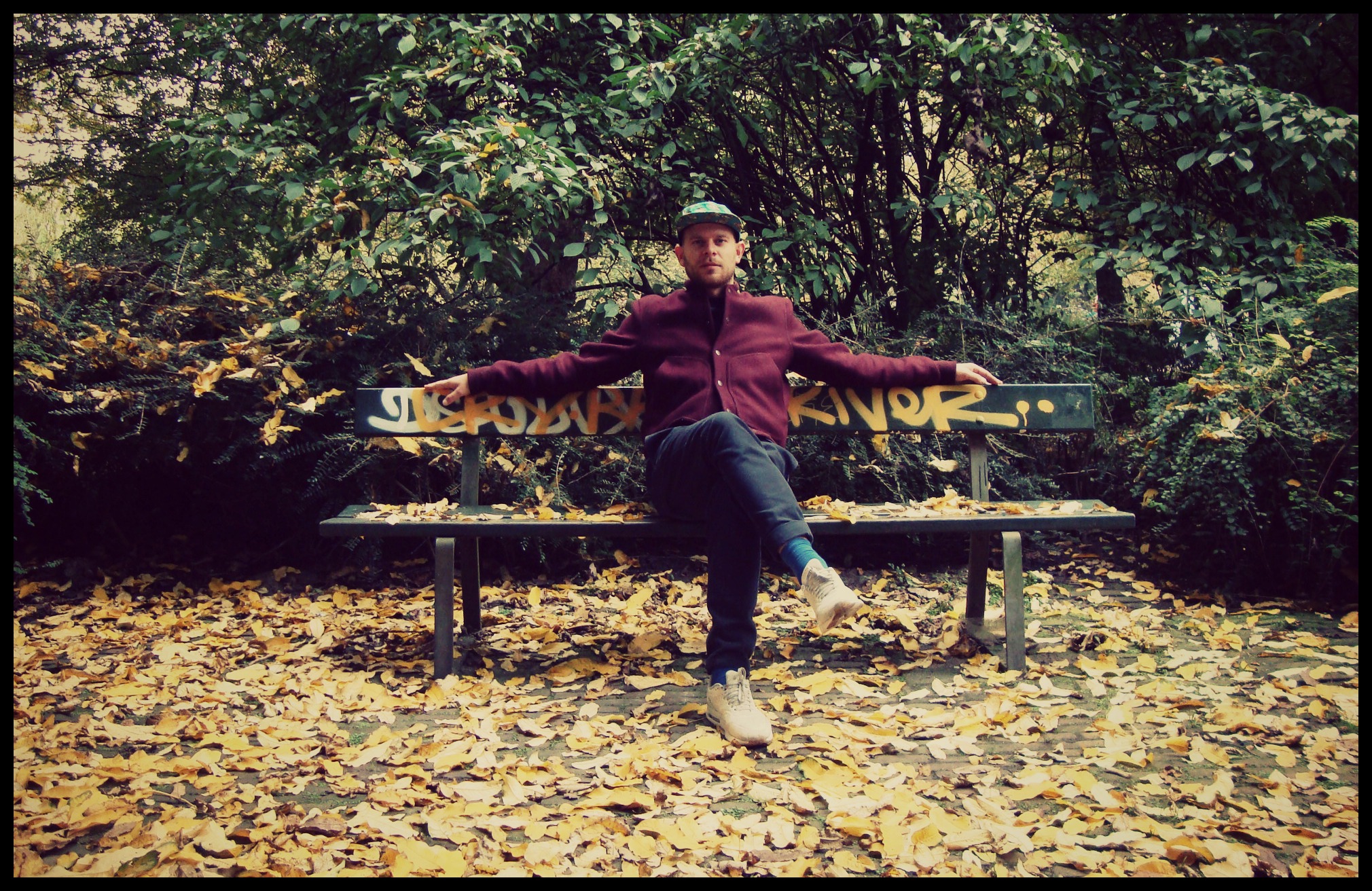Artist Tips: Tom Trago
"What I've learned from collaborating with different artists."

Artist Tips: Tom Trago
"What I've learned from collaborating with different artists."
Tom Trago has long been one of the leading lights of the Dutch electronic music scene—a DJ, producer, live performer, and label owner who enjoys nothing more than championing both overlooked gems and fresh sounds from his own country. He once claimed that he feels a physical need to make music every day, either solo or with friends and like-minded musicians from the Netherlands or beyond. He can count the likes of Steffi, Seth Troxler, Young Marco, and Bok Bok among his list of collaborators.
Trago’s break came in 2006 when hometown label Rush Hour released his debut single, titled “Live With The BBQ.” In the years since, Trago has continued to turn out much-played, club-ready cuts, including “Use Me Again (And Again)”, “Hidden Heart of Gold,” and “De Natte Cell,” his 2015 hook-up with Troxler, among others. It’s on his acclaimed long-players, though, that Trago has showcased the full breadth of his musical vision. Voyage Direct, an album debut, arrived in 2009 (his record label of the same name followed in 2010), followed by Iris (2011) and The Light Fantastic (2013), evidencing an open-minded musical development and a penchant for collaboration with like-minded musicians, vocalists, and producers. Earlier this year, he released his fourth studio album, titled Bergen, on Dekmantel, before heading out on tour with a new live show.
In support of the album, he offered to share some tips, all of which have been learned via these various collaborations and implemented on the album.
Use Different Pieces of Hardware to Sequence Your Drums (and Don’t Over-Correct the Timing or Use the “Warp”/”Flex” Function (Ableton/Logic) on Your Drums too Much.)
Experienced during the project:
Bok Bok & Tom Trago Night Voyage Tool Kit EP [Sound Pellegrino, 2011]
In 2011, I was introduced to Bok Bok through Sound Pellegrino boss Teki Latex. He came up with the idea of putting together two of his favorite producers to see what the outcome was. At that point, the only collaborations I’d done were with local friends, like Cinnaman/Yuro, San Proper, and Maxi Mill. They kinda used the same production methods (MPC2000xl-based) and we grew up together so there was little to gain in terms of new knowledge.
When I was introduced to Alex (a.k.a. BokBok), head of Night Slugs Recordings, we were both really digging the Dance Mania label stuff, so when we went into the studio we were already clear what we wanted the outcome to be: basic and effective dancefloor killers. We knew that the sound we were looking for didn’t come from the newer machines or laptops, so we borrowed a 909 and went over to Dexter’s to buy the Sequential Circuits Drumtraks (1984) he was selling it at the time. He had earlier called me to tell me that he was getting rid of his equipment. This machine works with EPROMS—a type of memory chip that retains its data when its power supply is switched off—that contain just a single drum sound. He gave us a whole bag full and told us to have fun.
Back in the studio, we connected the machines (MIDI) to the MPC2000xl, and it was clear from the start that the machines were not super correct in receiving each other’s timing. But that was exactly what we were looking for. It created a shuffle that is created by the shifting of machines that were dealing wrongly with data (and then correcting it). It gives true life to tracks because nothing is placed at the same time.
We were quite happy with our discovery and went on doing dozens of percussion tracks in one week. Most of the additional sounds came out of my MPC or BokBok’s computer, but I think it’s the drums that really carry this project/EP.
Make Your Chord Loops 16 or 32 Bars Instead of Four
Experienced during the project:
Seth Troxler & Tom Trago “De Natte Cell” (!k7, 2015)
From January 1 to 4, 2015, all residents and friends of the beloved club Trouw came together to celebrate the last weekend. Both Seth [Troxler] and I were residents at this place and knew that we were going to be there for the last time that weekend, so we both played multiple sets. After the last record was played, we were left with a feeling of fulfilment but also emptiness. As my studio is across the road from Trouw, we decided to make a track for the room called “De Natte Cell”. This was the most mysterious room of Trouw, (“the wet cell”); we both played there and were amazed by its magic.
Once settled in the studio, I started playing around on the Nordlead 2 and Seth was behind the controls. I remember I started playing a chord sequence and was looking for a good loop. What I learned from Seth and the situation was that you don’t always need a tight four-bar-chord sequence for a song. Seth told me: “Hold those keys longer and change things less; it’ll become less predictable and more unique through less change and longer stretched-out chords.” By finding the right futuristic chords, we created a nice underlayment to keep the rest of the track as spacey as we wanted it.
Also, we decided to write a poem directed to Trouw, as if Trouw was a person, and Seth laid the poem down in one take. I started adding vocal cheers (oooh’s & aaaah’s) to express the drama that was going on in our minds at that moment, knowing that we had lost our second home.

Level Your Music Rather Than Mixing Away All the Disturbing Frequencies.
Experienced on the project:
Alfabet (Awanto 3 & Tom Trago) “Roundabout” [Rush Hour, 2010]
Making music for me actually started with getting to know Rednose Distrikt. They used to consist of Aardvarck, Steven de Peven (a.k.a Awanto 3), and Kid Sublime. Kid Sublime and Steven both where using the MPC2000XL very instinctively when they did the first two albums. That’s when I was just a little kid in the back of the studio watching their moves. They showed me that with an MPC and a record collection you can literally make anything and everything.
When I started working with Steven De Peven, I noticed that in contrast to the other people that I’ve worked with, he didn’t mix anything. Also, his MPC2000xl didn’t have eight outputs to properly lay your track down on a mixing desk. But what I did notice was that most stuff sounded very balanced. Naturally, I asked how that’s possible. And that’s when I learned that levelling your sounds is more important than mixing them too much.
Most of the time, frequencies disturb each other because they are at the same volume in the track; this creates a layered sinus wave and it will start to disturb your ear because you will hear the same information twice. Also, panning is something that really helps in a situation like this; it’s another form of levelling, in a way. Try to use left and right panning to get your track sounding a bit comfier and use mixing last because you can lose the soul of the track by taking away too many frequencies.
Try to Get Inspired by and Learn From the Different Rhythms of Brazilian and African Music
Experienced on the project:
Tom Trago “Bergen” (drum programming by Overlast & Elias Mazian) [Dekmantel, 2018]
When I had the concept for this track, I knew I wanted to work with Overlast because of his background as a drummer. I told him I wanted to create a Brazilian groove but played on a Roland 808 and a 909 drum computer. I love going into a track with a premade strategy; it works faster and you know when you’ve reached your objective.
As inspiration, we were listening to a lot of samba and batucada, and also, for example, J Dilla’s “Rico Suave Bossa Nova.” Elias Mazian walked in and loved the idea. The first thing we focused on was the little hi tom that comes from the 808. I noticed that most Brazilian grooves have this counter timing in the high percussion. Overlast helped me out with this and with placing the hi-hats and the placing of the claps to keep a laid-back feeling. In the end, the bassline is also a big part of the pulsing energy of the track; this was added at the end to keep things driving.
Write a Track With One Certain Piece of Hardware
Experienced on the project:
Lonely C & Tom Trago Compass Joint [Self-released]
I met up with Soulclap back in the Trouw days. We started vibing and the next thing you know we went to my studio, which, as I said above, was across the road from the club. On one of the studio nights, I was with Charlie from Soulclap and we went on a stroll outside and on the way, we found this old organ. We brought it back in and found out it also had a drum computer inside. We checked out the sounds and decided to do a track using only that old organ. Dedicating a single piece of hardware to a track always works well because it limits options and it is a great way to learn about that piece of particular gear.
Limitations always work really well when it comes to creativity. Because you actually have to try harder, you will outdo yourself and come up with self-taught ways to overcome problems or obstacles. Also, once you master a certain piece of gear, you will then be able to work with it faster and you will know better in what situation you can really use that certain instrument/machine.

